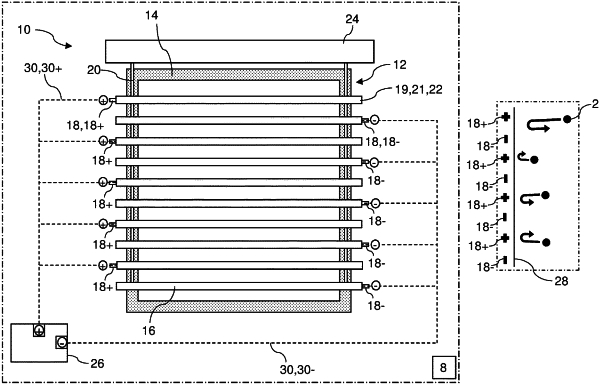| CPC A01M 29/28 (2013.01) [A01M 1/226 (2013.01); A01M 29/34 (2013.01)] | 14 Claims |

|
1. A barrier system (10) comprising:
one or more devices (16), in the form of a blind (20) system, that comprise at least two electrodes (18), each with a different electrical potential, wherein the at least two electrodes (18) are arranged remotely from one another and such that the at least two electrodes form a permanent electrical field (28) or a cyclical electrical field (28) or an intermittent electrical field (28) within an opening (12),
wherein the at least two electrodes (18) are: a) within the opening (12) in a wall or surface, b) on the edge of the opening (12), or c) outside of the opening (12) and in proximity to the opening (12)
wherein the at least two electrodes are lamellae (22) of the blind (20), and
wherein the electrical field (28) is configured to prevent insects (2) from passing through the opening (12) or from being killed or injured.
|